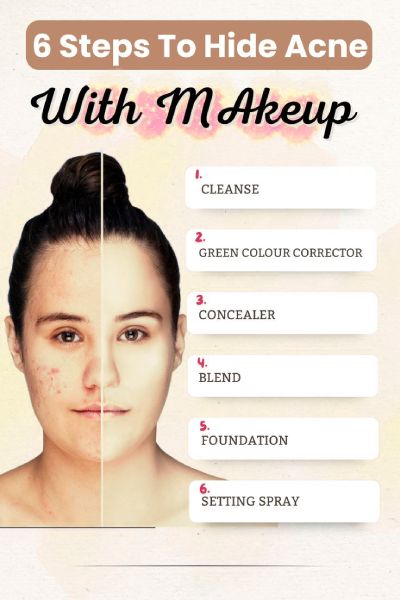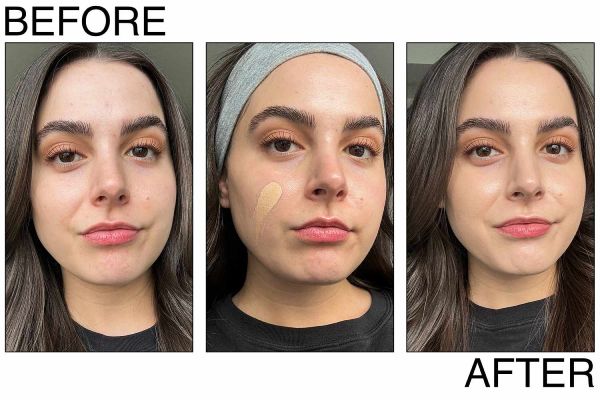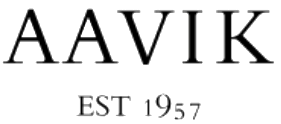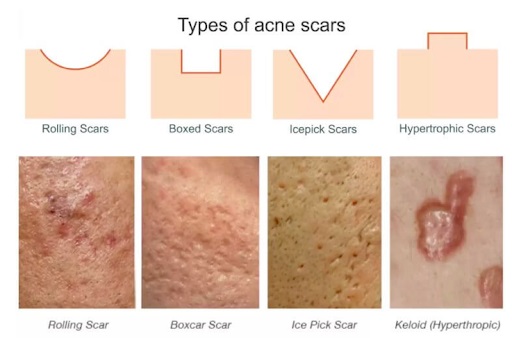The acne may be gone, but sometimes it leaves behind a lasting reminder. Post-acne scars, whether they are discolored spots or changes in skin texture, can be a frustrating challenge when striving for a smooth, even complexion. How to cover up acne scars effectively is one of the most common questions in makeup artistry. The good news is, with the right techniques and the best makeup to cover acne scars, a flawless canvas is absolutely achievable.
Understanding Your Scars: Different Types Need Different Techniques
Before you can effectively conceal a scar, you need to know what type you’re dealing with. Different types of textured skin require unique approaches.
Type 1: Post-Inflammatory Hyperpigmentation (Dark or Red Spots)
These are the flat, discolored spots left behind after a pimple has healed. They can be reddish, purplish, or brownish. The challenge here is color, not texture.
Type 2: Atrophic Scars (Pitted, Ice Pick, Boxcar)
These are indented scars that sit below the surface of the skin, creating a “pitted” appearance. Pitted scars are challenging because they create shadows, which foundation can’t easily hide.
Type 3: Hypertrophic Scars (Raised Scars)
Less common on the face, these scars are raised bumps of tissue. The challenge here is smoothing the appearance of raised texture.
The Technique for Flat Scars (Hyperpigmentation)
If your main concern is discoloration, your secret weapon is color correcting.
Step 1: Color Correcting to Neutralize the Tone
To cancel out reddish or purplish scars, use a green-toned color corrector. For brownish or darker scars, a peach or apricot-toned corrector works best. Apply a very thin layer only on the discolored spot.

Step 2: Pinpoint Concealing with a High-Coverage Product
Using a small, precise brush, tap a high-coverage concealer or foundation directly onto the corrected spot. The Aavikuk cushion can serve as the best concealer for acne scars in this step due to its buildable nature.
Step 3: Blending a Seamless Foundation Layer
Gently apply your foundation over the top, using a tapping motion to avoid disturbing the concealer underneath. This will create a perfectly even skin tone.
The Technique for Indented Scars (Pitted or “Ice Pick”)
Can you cover pitted scars with makeup? Yes, by using techniques that manipulate light and texture.
Step 1: The Crucial Role of a Pore-Filling Primer
This is the most important step. Apply a pore-filling primer or a silicone-based primer over the scarred areas. This works by creating a smooth, even film over the skin, temporarily “filling in” the indentations.

Step 2: Applying Foundation with a Stippling Motion
Do not rub or swipe your foundation on. Use a stippling motion—a gentle tapping or pressing—with a dense brush or sponge. This applies the foundation without disrupting the smooth layer of primer you’ve created.
Step 3: Using a Light-Reflecting Concealer to “Lift” the Shadow
After foundation, take a concealer that is one shade lighter than your skin tone and has a radiant finish. Apply a tiny dot in the deepest part of the scar. This bit of light will counteract the shadow, making the indentation look much less deep.
Aavikuk: The Best Full-Coverage Foundation for Scarred Skin
Tackling these challenges requires a versatile, high-performance foundation. The Aavikuk Jewel Radiance Cushion is engineered to be the ideal full-coverage foundation for scarred skin.

High-Impact Pigments for Superior Camouflage
Our formula is packed with rich, high-coverage pigments that can effectively camouflage discoloration from hyperpigmentation without needing heavy layers.
Optical-Blurring Gemstone Powders to Smooth Texture
For textured scars, our 7 gemstone powders are a game-changer. They create a soft-focus, optical-blurring effect that scatters light, making the skin’s surface appear dramatically smoother and minimizing the appearance of pits and pores.
A Non-Comedogenic Formula Safe for Scar-Prone Skin
Crucially, our foundation is non-comedogenic. This means it won’t clog your pores, which is essential for skin that is prone to scarring and breakouts. You can conceal with confidence, knowing your makeup is caring for your skin.
Your Flawless Canvas, Reclaimed
Acne scars do not have to dictate your confidence or your makeup routine. By understanding your unique skin and arming yourself with these professional techniques, you can reclaim the power to create a smooth, beautiful canvas that you feel proud of.
Ready to reclaim your smooth, flawless canvas? The power to transform your skin’s appearance is in your hands. Discover the Aavikuk Full-Coverage Foundation, engineered for scarred skin.
FAQ: Your Acne Scar Makeup Questions Answered
How do I cover raised acne scars? For raised scars, the goal is to reduce their appearance. Avoid shimmery products on the area. After applying your foundation, you can use a matte concealer that is a perfect match to your skin tone to tap over the scar, which can help it look flatter.
Will heavy makeup make my acne scars worse? If you use non-comedogenic products and properly cleanse your skin every night, makeup itself should not worsen scars. However, heavy, pore-clogging formulas can lead to new breakouts, which could potentially lead to new scars. That’s why choosing a breathable formula like Aavikuk’s is so important.
How can I make the coverage over my scars last all day? A good primer is key. After applying your makeup, setting the specific concealed areas with a light dusting of translucent powder can help to lock the coverage in place for hours.
Is it better to use a thicker concealer or a buildable foundation? A buildable foundation is often a better choice for an overall natural look. It allows you to apply a sheer layer everywhere and build up coverage only where needed, avoiding a heavy, masked appearance. A thick concealer can sometimes look more obvious on the skin.


